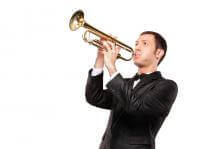How to Get Into Flow
How to enter the focused, fulfilling state of flow? Here are Savvy Psychologist’s 10 tips to help you get started.

By contrast, when you’re in flow, you feel in full control, focused, and un-self-conscious. You have a sense that what you are doing is important and you look up and wonder where the time has gone—an hour can pass in what seems like a moment.
Thanks to listener Kevin Currier – who listens to the Savvy Psychologist podcast from the island of Hainan in China – for the idea for this podcast. For him, and for all who want to experience flow, here are 10 tips to help you get, well, flowing:
Tip #1: Choose an activity that is intrinsically rewarding. Your drive should come from an internal wellspring; in other words, do the activity for its own sake, not because you anticipate a big paycheck, are trying to impress someone, or fear negative consequences otherwise. Likewise, flow won’t happen for something you’re just not interested in. You can’t force flow for a project you “have to” do, or for tedious tasks like paying bills or waiting in line (though you can increase your engagement—check out Tip #10 for more on that).
Tip #2: Choose an activity with a clear goal and rules. To grow flowers, it’s better to plant seeds in their own pot, rather than scatter them to the wind. Likewise, flow blossoms within constraints. Two of the most common ways to define your activity are 1) to engage in an activity with goals and rules, whether its rock climbing or chess, or 2) to create something, whether it’s a ballet performance, a watercolor, or a cassoulet.
Tip #3: Choose an activity that requires skill. Psychologists who specialize in happiness will tell you to value experiences over objects. For instance, investing in travel rather than buying a new car will usually net you greater happiness. But you can derive even more value from experiences that require skill. Knowing how to do things (again, things with clear goals and rules) like waterski, frost the perfect cake, play the accordion, or even write psychology podcasts, will give you a shot at flow.
Furthermore, to maximize chances of flow, Csikszentmihalyi writes, “Enjoyment appears at the boundary between boredom and anxiety, when the challenges are just balanced with the person’s capacity to act.” In other words, your skill should be challenged, but not beyond your limits.

Tip #5: Do the task intentionally. Let’s make an example of playing pool. If flow is what you’re after, your approach to pool is to focus intently, have a goal to play well, and play for the sake of playing. On the other hand, if flow isn’t on the agenda, it’s more than OK to simply relax and mess around for a few games with your buddies.

Tip #7: Be alone, or at least with others focusing on the same thing. Because flow requires focus and time, your chances are best when you’re alone (or at least feel autonomous; for example, a concert pianist has an audience, but the performance is hers alone). Or, be part of a group doing the same activity—for example, you might encounter flow as the bassist in a jazz band, a player in a poker tournament, or as half of a beach volleyball team.
Tip #8: Be free of interruptions. Flow doesn’t do multitasking. So turn off your phone, close your email, and shut the door.
Tip #9: Remember that flow and happiness are different. The biggest misconception about flow is that it’s a state of exhilarating bliss. It’s more a state of immersion or absorption. But after the sonata is finished, the poem is written, or the ski run is over, we do feel happiness—or satisfaction, or meaning—in retrospect.

Tip #10: Try increasing engagement in tedious tasks with microflow. True flow is peak engagement, but there are ways to get into flow lite, or “microflow” that increases engagement in boring tasks. Dr. Csikszentmihalyi writes that you can tweak tasks to create challenge, interest, or meaning by changing your mindset from “I have to do this” to that of a game or challenge.
In his book, Finding Flow, Csikszentmihalyi tells a story of a tumor biologist who loves his job with two exceptions: waiting around in airports and writing grant proposals. So, rather than trudging through these two tasks, he combines them to create a game of sorts. He starts dictating grant proposals while sitting at the gate or inching along in customs lines. He challenges himself to dictate as much as possible while waiting. He goes from feeling like both tasks are chores to feeling energized and challenged. His dictation game was engaging, stretched his skills, had clear rules, and offered immediate feedback. It wasn’t the complete engagement of flow, but it achieved the increased engagement of microflow.
So if you’re anxious, bored, or simply feeling disconnected, Csikszentmihalyi offers a way to get more from everyday life. From windsurfing to quilting to singing arias to rolling sushi, you’re invited to find the joy of complete engagement.
References
Csikszentmihalyi, M. (1997). Finding Flow: The Psychology of Engagement with Everyday Life. New York: Basic Books.



